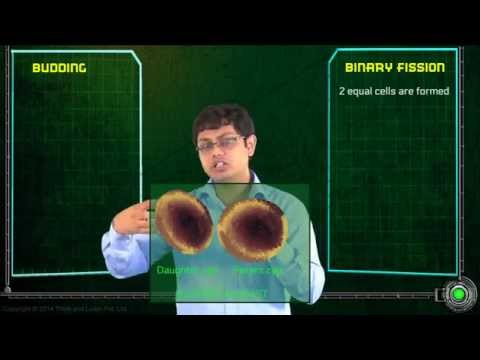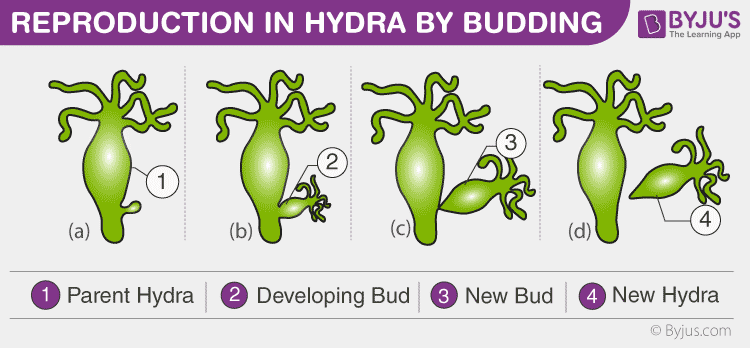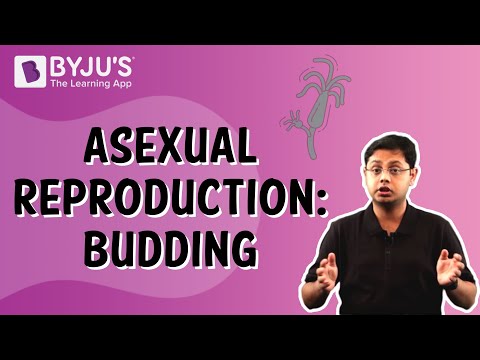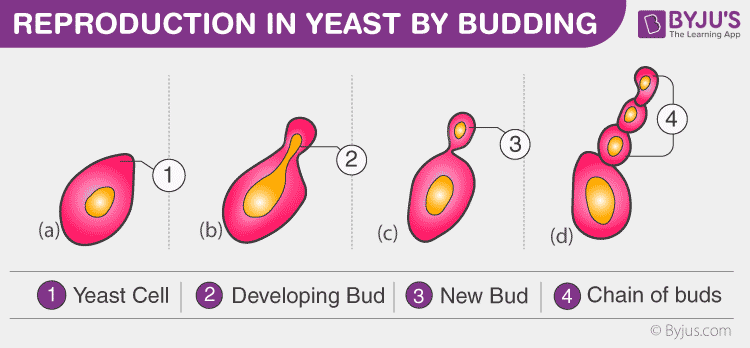Table of Content:
| What is Budding? | Types of Budding | Frequently Asked Questions |

What is Budding?
Budding is an asexual mode of producing new organisms. In this process, a new organism is developed from a small part of the parent’s body. A bud which is formed detaches to develop into a new organism.
The newly developed organism remains attached as it grows further. It is separated from the parent organism when it gets matured by leaving scar tissues behind. As this is asexual reproduction, the newly developed organism is a replica of the parent and is genetically identical.
For reproduction, Hydra uses regenerative cells where a bud expands as an outgrowth because of repeated cell division at one specific location. These buds then developed into new small individuals which when completely matured, detach from the parent body.
Examples of Budding
Budding is a type of asexual reproduction, which is most commonly associated in both multicellular and unicellular organisms. Bacteria, yeast, corals, flatworms, Jellyfish and sea anemones are some animal species which reproduce through budding.
Types of Budding
Budding in Hydra

Hydra is exclusively a freshwater organism having different species. It is very small, just a half centimetre long. It is a cnidarian having a tubular body which is composed of a head, distal end and afoot at the end.
Budding in hydra involves a small bud which is developed from its parent hydra through the repeated mitotic division of its cells. The small bud then receives its nutrition from the parent hydra and grows healthy. Growth starts by developing small tentacles and the mouth. Finally, the small newly produced hydra gets separated from its parent hydra and becomes an independent organism.

Budding in Yeast

Yeasts are non-green, eukaryotic, single-celled microorganisms belonging to the kingdom fungus. They are generally larger than the bacteria and they typically measure 3-4 µm in diameter. Yeast cells reproduce asexually by an asymmetric division process called budding.
In yeast, budding usually occurs during the abundant supply of nutrition. In this process of reproduction, a small bud arises as an outgrowth of the parent body. Later the nucleus of the parent yeast is separated into two parts and one of the nuclei shifts into the bud. The newly created bud divides and grows into a new cell.
Stay tuned with BYJU’S to learn more about Budding and its process.
Frequently Asked Questions
What is budding?
Budding is an asexual reproduction method in which a new organism develops from a bud of an existing organism. Until the new organism matures, it remains attached to the parent organism. Hydra and yeast, for example, reproduce by budding.
What is internal budding?
Internal budding, also known as endodyogeny, is an asexual reproduction process favoured by parasites like Toxoplasma gondii. It is a unique process in which 2 daughter cells are produced inside a mother cell, which is then imbibed by the offspring prior to their separation.
What is exogenous budding?
Exogenous budding is a type of asexual reproduction displayed by organisms such as hydra. A new organism develops as an outgrowth or bud on the surface of the mother cell during this process. It expresses itself externally on the parent.

describe budding as a method of reproduction.
Budding is an asexual mode of reproduction. In this process, a new organism is formed from a part of the parent’s body. A bud which is formed detaches to develop into a new organism.
helpful
Great and helpful 👍
It is very helpful for me
Thank u so much . It’s very helpful ☺️☺️☺️👌👌👌